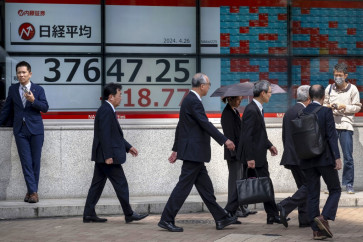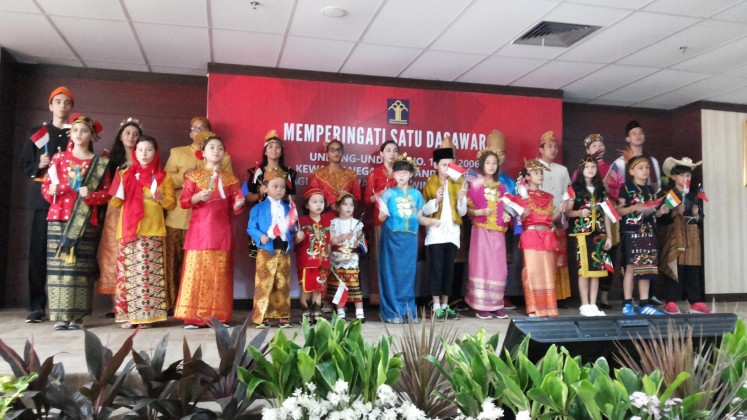The Qipao: An Iconic Symbol of Chinese Beauty
A sight to remember: Clad in a qipao dress, Maggie Cheung (left) is seen in a scene from Wong Kar-waiâs iconic film In the Mood for Love alongside actor Tony Leung
Change Size
 A sight to remember: Clad in a qipao dress, Maggie Cheung (left) is seen in a scene from Wong Kar-waiâs iconic film In the Mood for Love alongside actor Tony Leung.(Courtesy of movies.mxdwn.com)" border="0" height="355" width="511">A sight to remember: Clad in a qipao dress, Maggie Cheung (left) is seen in a scene from Wong Kar-waiâs iconic film In the Mood for Love alongside actor Tony Leung.(Courtesy of movies.mxdwn.com)
A sight to remember: Clad in a qipao dress, Maggie Cheung (left) is seen in a scene from Wong Kar-waiâs iconic film In the Mood for Love alongside actor Tony Leung.(Courtesy of movies.mxdwn.com)" border="0" height="355" width="511">A sight to remember: Clad in a qipao dress, Maggie Cheung (left) is seen in a scene from Wong Kar-waiâs iconic film In the Mood for Love alongside actor Tony Leung.(Courtesy of movies.mxdwn.com)Who could forget Maggie Cheung, the Hong Kong superstar, in Wong Kar Waiâs In the Mood for Love?
In Wong Kar Waiâs critically acclaimed movie In the Mood for Love, Hong Kong superstar Maggie Cheung dazzles in no fewer than 21 qipao dresses.
Colorful and impeccably cut, the traditional Chinese dresses that she wears seem to play a subliminal role in the languid, timeless film.
Each qipao highlights her slim figure while her perfectly coiffed, jet-black hair sets off her porcelain skin and red lips to paint a picture of a quintessentially beautiful Chinese woman.
The qipao also restricts her movements because of its high and stiff neckline and figure-hugging style. The slits on either side of the dress also mean that she has to sit demurely without revealing too much of her legs.
As the year of the monkey approaches, we will see many variations of the qipao.
âThe qipao is rich in history. It is specially made to showcase a womanâs figure,â according to Jeannie Jusuf, a restaurateur who studied fashion merchandising and marketing at the Fashion Institute of Design and Merchandising in Los Angeles.
She pointed out that the qipao, which is also known as the cheongsam (in Cantonese), has existed since the Manchu dynasty.
The modern version of the qipao was developed in Shanghai and worn by the upper class and celebrities in the city. Many fashion historians have analyzed the evolution of the qipao as an adaptation of the Western dress during Chinaâs Republican period.
In metropolitan Jakarta, high-end designers, such as Adrian Gan, Sebastian Gunawan and Biyan, offer fabulous creations featuring intricate beading and embroidery.
 Sebastian Gunawan
Sebastian Gunawan
Expensive fabrics like silk, lace and velvet are often used to justify the stratospheric price tags.
On the other end of the spectrum, ready-to-wear versions are available at inexpensive outlets in downtown Kota, the cityâs Chinatown. Middle-class shoppers may also find qipao in all sorts of colors and styles â short, long, cap sleeves or sleeveless â at department stores.
Other than to usher in the Chinese New Year, the qipao is also worn for important Chinese ceremonies.
âI love the custom-made qipao that I wore during the tea ceremony prior to my wedding. It was custom-made by my fatherâs friend, an old seamstress in Medan. I will always treasure that significant moment of my life,â Dolly Francy, a piano instructor, recalled.
The qipao is also worn at birthday or wedding anniversary celebrations.
Non-Chinese women have also embraced the qipao.
Ayu Hakim, an entrepreneur, said she bought her first qipao from Shanghai Tang in Hong Kong.
âIt is a deep red color,â she explained. âI love how it accentuates the figure. It is very elegant!â
For her, the qipao is more of a fashion statement than a cultural symbol. Nevertheless, she loves wearing the qipao and red dresses during Chinese New Year, as she has many Chinese friends.
Like Ayu, Irana Basuki, a mother of two young boys, also enjoys wearing the qipao. âI have several nice qipao,â she said. âI also have a vintage qipao made in the 1970s, which used to belong to my mother.â  A sight to remember: <)
A sight to remember: <)
A
span class="inline inline-center">A sight to remember: Clad in a qipao dress, Maggie Cheung (left) is seen in a scene from Wong Kar-wai's iconic film In the Mood for Love alongside actor Tony Leung.(Courtesy of movies.mxdwn.com)
Who could forget Maggie Cheung, the Hong Kong superstar, in Wong Kar Wai's In the Mood for Love?
In Wong Kar Wai's critically acclaimed movie In the Mood for Love, Hong Kong superstar Maggie Cheung dazzles in no fewer than 21 qipao dresses.
Colorful and impeccably cut, the traditional Chinese dresses that she wears seem to play a subliminal role in the languid, timeless film.
Each qipao highlights her slim figure while her perfectly coiffed, jet-black hair sets off her porcelain skin and red lips to paint a picture of a quintessentially beautiful Chinese woman.
The qipao also restricts her movements because of its high and stiff neckline and figure-hugging style. The slits on either side of the dress also mean that she has to sit demurely without revealing too much of her legs.
As the year of the monkey approaches, we will see many variations of the qipao.
'The qipao is rich in history. It is specially made to showcase a woman's figure,' according to Jeannie Jusuf, a restaurateur who studied fashion merchandising and marketing at the Fashion Institute of Design and Merchandising in Los Angeles.
She pointed out that the qipao, which is also known as the cheongsam (in Cantonese), has existed since the Manchu dynasty.
The modern version of the qipao was developed in Shanghai and worn by the upper class and celebrities in the city. Many fashion historians have analyzed the evolution of the qipao as an adaptation of the Western dress during China's Republican period.
In metropolitan Jakarta, high-end designers, such as Adrian Gan, Sebastian Gunawan and Biyan, offer fabulous creations featuring intricate beading and embroidery.

Expensive fabrics like silk, lace and velvet are often used to justify the stratospheric price tags.
On the other end of the spectrum, ready-to-wear versions are available at inexpensive outlets in downtown Kota, the city's Chinatown. Middle-class shoppers may also find qipao in all sorts of colors and styles ' short, long, cap sleeves or sleeveless ' at department stores.
Other than to usher in the Chinese New Year, the qipao is also worn for important Chinese ceremonies.
'I love the custom-made qipao that I wore during the tea ceremony prior to my wedding. It was custom-made by my father's friend, an old seamstress in Medan. I will always treasure that significant moment of my life,' Dolly Francy, a piano instructor, recalled.
The qipao is also worn at birthday or wedding anniversary celebrations.
Non-Chinese women have also embraced the qipao.
Ayu Hakim, an entrepreneur, said she bought her first qipao from Shanghai Tang in Hong Kong.
'It is a deep red color,' she explained. 'I love how it accentuates the figure. It is very elegant!'
For her, the qipao is more of a fashion statement than a cultural symbol. Nevertheless, she loves wearing the qipao and red dresses during Chinese New Year, as she has many Chinese friends.
Like Ayu, Irana Basuki, a mother of two young boys, also enjoys wearing the qipao. 'I have several nice qipao,' she said. 'I also have a vintage qipao made in the 1970s, which used to belong to my mother.' 
Irana's mother, Maggy Amidi, who has Dutch, Indonesian and Chinese ancestry, bought the qipao in Singapore and wore it in Holland while living there. She brought it to Indonesia when she moved here permanently. Now, her daughter cherishes the qipao for the memories she has while growing up.
'My mother used to wear her jade-colored qipao to many parties,' Irana said.
'In Holland, she had to raise my sister and me while working to support my father, who was pursuing his medical degree at the University of Rotterdam. It was not until I was 8 years old that we returned to Indonesia.'
Irana reminisced that she and her family had to start life anew as Indonesian citizens when her uncle, Peter Gontha, the current Indonesian Ambassador to Poland and the pioneer of Java Jazz festival, finally persuaded her father to start practicing medicine in Indonesia.
Irana's account is merely one of the many stories that the qipao holds. Looking at the wide array of qipao that are available in Indonesia and how women from all walks of life are wearing the iconic Chinese dress, it is difficult to imagine an era when all forms of Chinese culture and language were banned.
In the New Order era (1965-1998), no one dared to wear overtly Chinese clothing. It was not until the Reform era that began in 1998 that women began to wear the qipao again. Even cherubic little girls wear mini versions of the qipao now.
As the qipao has gained popularity in recent years, Indonesian women and girls who choose to wear the it create and capture their own stories and memories, to be passed down to a new generation.









